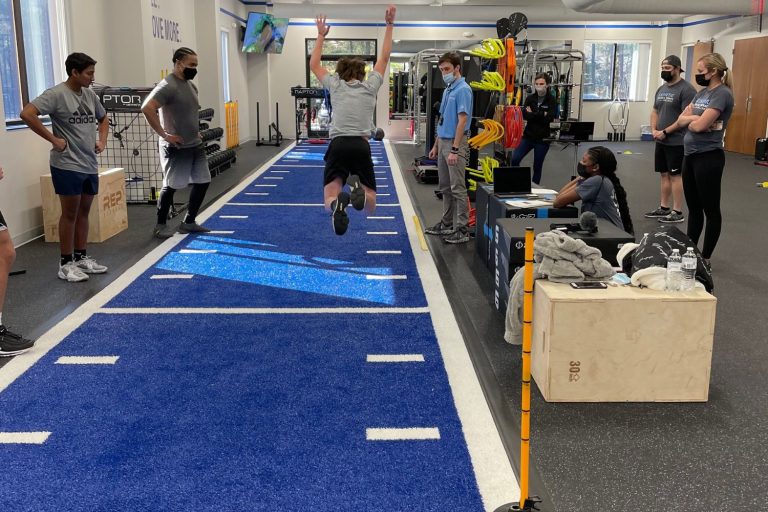

7 Myths About Physical Therapy
People everywhere are experiencing the transformative effect physical therapy can have on their daily lives. In fact, as experts in the way the body moves, physical therapists help people of all ages and abilities reduce pain, improve or restore mobility, and stay active and fit throughout life. But there are some common misconceptions that often discourage people from visiting a physical therapist.
It’s time to debunk 7 common myths about physical therapy:
1. Myth: I need a referral to see a physical therapist.
Fact: A recent survey by the American Physical Therapy Association (APTA) revealed 70% of people think a referral or prescription is required for evaluation by a physical therapist. However, all 50 states and the District of Columbia (DC) allow patients to be evaluated by a physical therapist without a physician’s prior referral. In addition, 49 states and DC allow for some form of treatment or intervention without a physician referral or prescription (Michigan being the exception). On January 1, 2015, patients in Michigan will be able to do so, as well. Some states have restrictions about the treatment a physical therapist can provide without a physician referral.
2. Myth: Physical therapy is painful.
Fact: Physical therapists seek to minimize your pain and discomfort—including chronic or long-term pain. They work within your pain threshold to help you heal, and restore movement and function. The survey found that although 71% of people who have never visited a physical therapist think physical therapy is painful, that number significantly decreases among patients who have seen a physical therapist in the past year.
3. Myth: Physical therapy is only for injuries and accidents.
Fact: Physical therapists do a lot more than just stretch or strengthen weak muscles after an injury or surgery. They are skilled at evaluating and diagnosing potential problems before they lead to more serious injuries or disabling conditions—from carpal tunnel syndrome and frozen shoulder, to chronic headaches and lower back pain, to name a few.
4. Myth: Any health care professional can perform physical therapy.
Fact: Although 42% of consumers know that physical therapy can only be performed by a licensed physical therapist, 37% still believe other health care professionals can also administer physical therapy. Many physical therapists also pursue board certification in specific areas such as neurology, orthopedics, sports, or women’s health, for example.
5. Myth: Physical therapy isn’t covered by insurance.
Fact: Most insurance policies cover some form of physical therapy. Beyond insurance coverage, physical therapy has proven to reduce costs by helping people avoid unnecessary imaging scans, surgery, or prescription drugs. Physical therapy can also lower costs by helping patients avoid falls or by addressing conditions before they become chronic.
6. Myth: Surgery is my only option.
Fact: In many cases, physical therapy has been shown to be as effective as surgery in treating a wide range of conditions—from rotator cuff tears and degenerative disk disease, to meniscal tears and some forms of knee osteoarthritis. Those who have recently seen a physical therapist know this to be true, with 79% believing physical therapy can provide an alternative to surgery.
7. Myth: I can do physical therapy myself.
Fact: Your participation is key to a successful treatment plan, but every patient still needs the expert care and guidance of a licensed physical therapist. Your therapist will leverage his or her specialized education, clinical expertise, and the latest available evidence to evaluate your needs and make a diagnosis before creating an individualized plan of care.
Please Share
categories
Recent Posts
categories

7 Myths About Physical Therapy
People everywhere are experiencing the transformative effect physical therapy can have on their daily lives. In fact, as experts in the way the body moves, physical therapists help people of all ages and abilities reduce pain, improve or restore mobility, and stay active and fit throughout life. But there are some common misconceptions that often discourage people from visiting a physical therapist.
It’s time to debunk 7 common myths about physical therapy:
1. Myth: I need a referral to see a physical therapist.
Fact: A recent survey by the American Physical Therapy Association (APTA) revealed 70% of people think a referral or prescription is required for evaluation by a physical therapist. However, all 50 states and the District of Columbia (DC) allow patients to be evaluated by a physical therapist without a physician’s prior referral. In addition, 49 states and DC allow for some form of treatment or intervention without a physician referral or prescription (Michigan being the exception). On January 1, 2015, patients in Michigan will be able to do so, as well. Some states have restrictions about the treatment a physical therapist can provide without a physician referral.
2. Myth: Physical therapy is painful.
Fact: Physical therapists seek to minimize your pain and discomfort—including chronic or long-term pain. They work within your pain threshold to help you heal, and restore movement and function. The survey found that although 71% of people who have never visited a physical therapist think physical therapy is painful, that number significantly decreases among patients who have seen a physical therapist in the past year.
3. Myth: Physical therapy is only for injuries and accidents.
Fact: Physical therapists do a lot more than just stretch or strengthen weak muscles after an injury or surgery. They are skilled at evaluating and diagnosing potential problems before they lead to more serious injuries or disabling conditions—from carpal tunnel syndrome and frozen shoulder, to chronic headaches and lower back pain, to name a few.
4. Myth: Any health care professional can perform physical therapy.
Fact: Although 42% of consumers know that physical therapy can only be performed by a licensed physical therapist, 37% still believe other health care professionals can also administer physical therapy. Many physical therapists also pursue board certification in specific areas such as neurology, orthopedics, sports, or women’s health, for example.
5. Myth: Physical therapy isn’t covered by insurance.
Fact: Most insurance policies cover some form of physical therapy. Beyond insurance coverage, physical therapy has proven to reduce costs by helping people avoid unnecessary imaging scans, surgery, or prescription drugs. Physical therapy can also lower costs by helping patients avoid falls or by addressing conditions before they become chronic.
6. Myth: Surgery is my only option.
Fact: In many cases, physical therapy has been shown to be as effective as surgery in treating a wide range of conditions—from rotator cuff tears and degenerative disk disease, to meniscal tears and some forms of knee osteoarthritis. Those who have recently seen a physical therapist know this to be true, with 79% believing physical therapy can provide an alternative to surgery.
7. Myth: I can do physical therapy myself.
Fact: Your participation is key to a successful treatment plan, but every patient still needs the expert care and guidance of a licensed physical therapist. Your therapist will leverage his or her specialized education, clinical expertise, and the latest available evidence to evaluate your needs and make a diagnosis before creating an individualized plan of care.
Please Share
You May Also Like









